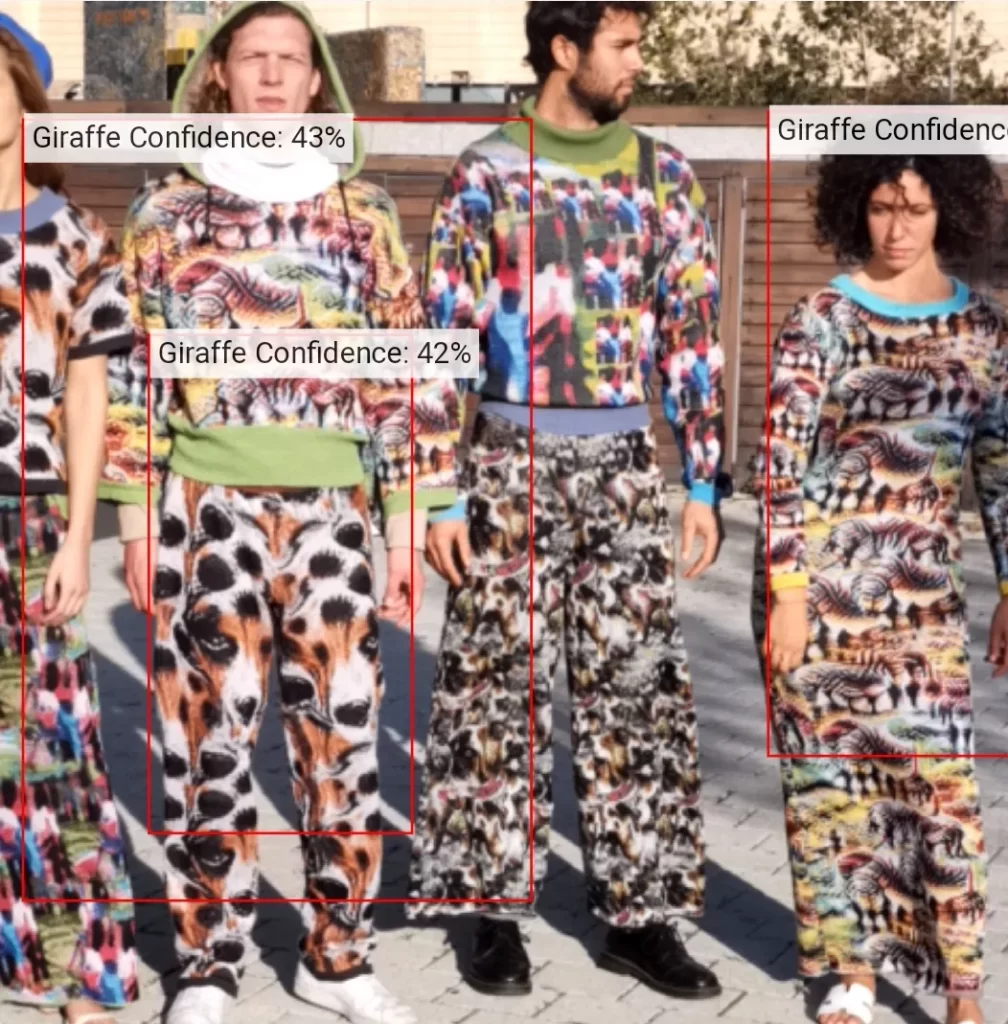We stress about refusing the use of cookies, we get angry if a telemarketing company gets our phone number without our knowledge. We see our privacy as important, yet we are not always aware that we are putting it at risk. How many times a day do we step into the view of a surveillance camera without even realising?
Do we know where our images of us will be collected and stored? Do we know who will use them, and for what purpose? Most of the time, the answer is no. This is the premise behind Rachele Didero’s work, a student designer at the Politecnico di Milano, who has patented Adversarial Knitted Textile. She has come up with a method for putting together pieces of clothing that can protect the wearer against automated facial recognition.

It works thanks to adversarial patterns ('clashing images'): seemingly abstract images that can confuse surveillance camera algorithms. Essentially, if I wear a piece of clothing that is patterned with a clashing image, my biometric facial data cannot be detected, or is placed into an incorrect category, for example in 'animal' instead of 'person', and therefore is not stored.
The Adversarial Knitted Textile method, patented together with the Politecnico di Milano with the support of Prof. Giovanni Maria Conti, allows the adversarial algorithm to be transferred into a mesh fabric without losing its effectiveness. The patterns confuse facial recognition cameras, thus protecting the person's identity. prof. Giovanni Maria Contiallows the adversarial algorithm to be transferred into a mesh fabric without losing its effectiveness. The patterns confuse facial recognition cameras, thus protecting the person's identity.
Rachele Didero, 27, enrolled in Fashion Design at the Politecnico di Milano after graduating. During her studies, she travelled a lot and had a lot of international experiences; she attended the ESDI design school in Barcelona, the Shenkar College in Tel Aviv and the Fashion Institute of Technology in New York. She states that it was there, in 2019, that she discovered the potential of combining computer science and textiles.
"I decided to delve deeper into the research once I returned to Milan and choose it as the topic for my Master's dissertation. The first experiments, in January 2020, took place at the Politecnico di Milano."
After months of research, in collaboration with Shenkar College, including the textile industry, machine learning and anthropometry, the adversarial fabric took shape. Didero tested it against YOLO, the most advanced real-time object-recognition system, and patented it in February 2021, in co-ownership with the Politecnico. The three-dimensional structure of the mesh fabric and its patterns reproduce adversarial images in a way that effectively counters facial recognition algorithms, thus protecting the user's identity.

In 2021, Didero founded the start-up Cap_able, with which she prototyped the first Adversarial Knitted Textile clothing collection, the Manifesto Collection. A name not chosen by chance, she comments.
Every morning, as soon as we wake up, we choose what clothes to wear, an outfit that will accompany us throughout the day and represent our image in the world and in our interactions with others. For Didero, this is the first conscious communication action we take, a choice that can become a vehicle for our values, including our human rights.
"In a world where data is the greatest economic resource, Cap_able addresses the issue of privacy, sparking the discussion on the importance of protecting against the misuse of biometric recognition cameras”
Our facial image is a form of biometric data in the same way as our fingerprints or DNA. People should be able to give their explicit consent to the processing of their data, but this is impossible in the case of facial recognition, given that we would have to give consent every time we entered a public space where surveillance cameras are used.
“Manifesto’s aim is to raise awareness about the right to privacy and the protection of biometric data, an issue that is often overlooked despite the fact that it affects the majority of citizens worldwide. The value of this project is two-fold: the clothing is not only a shield against biometric recognition, but it is also, and predominantly, a manifesto intended to spark debate on the importance of protection against the misuse of facial recognition cameras”.